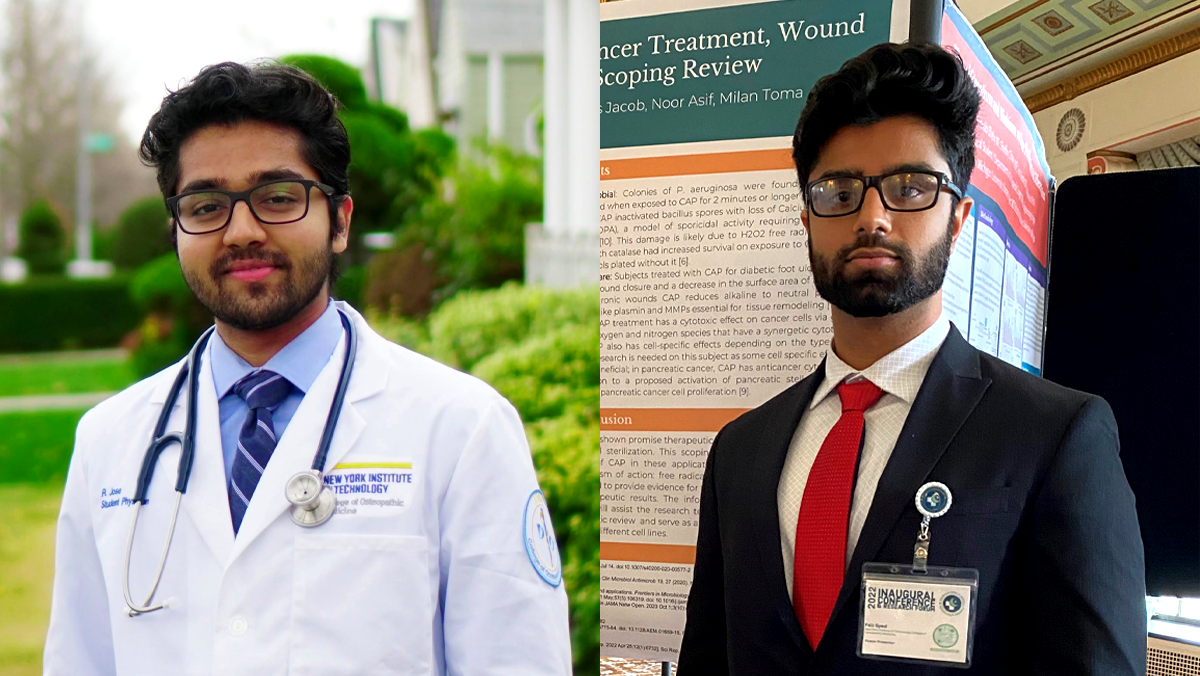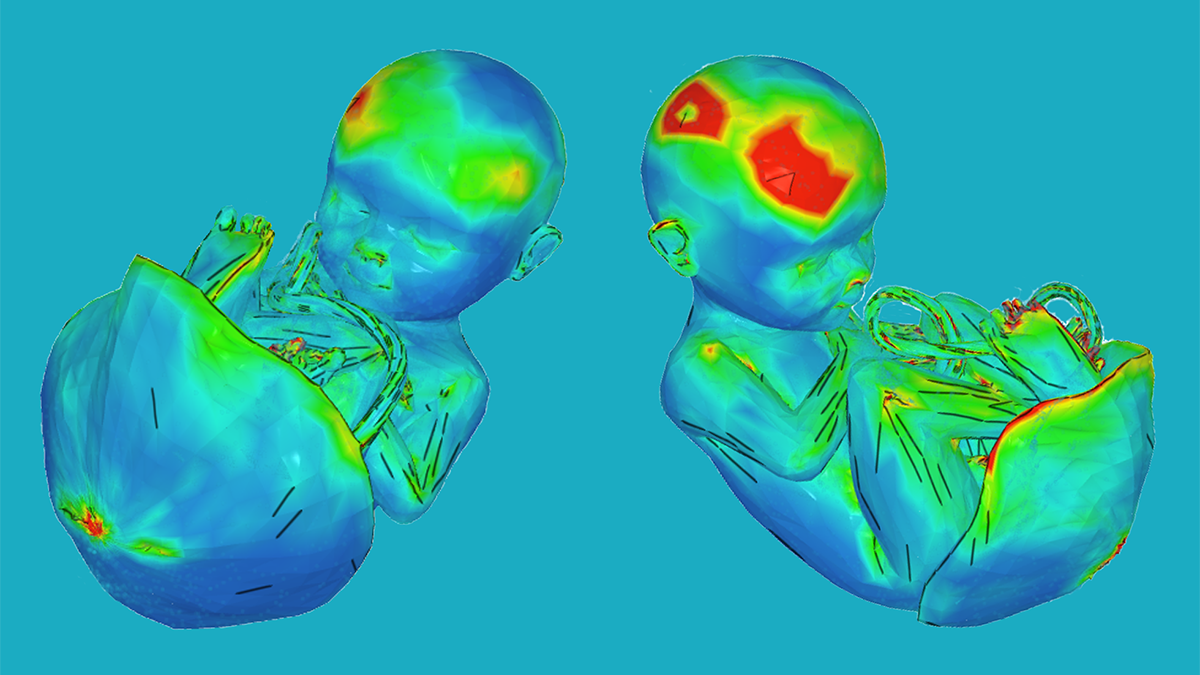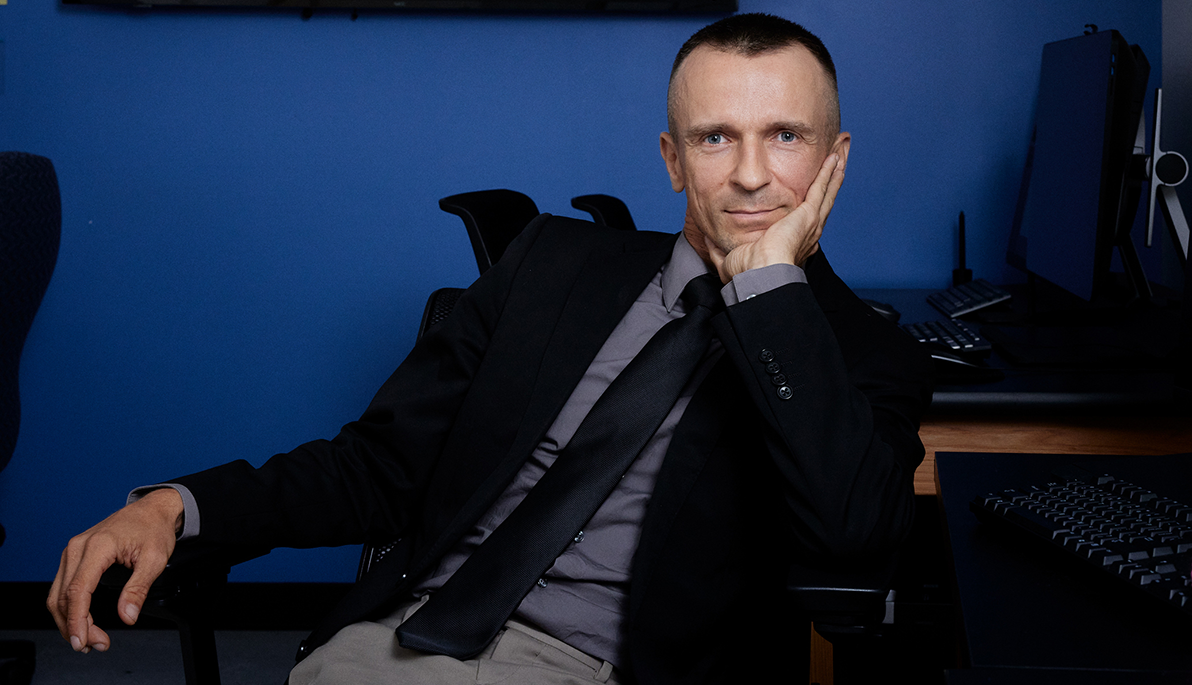News
Building a Bridge Between Engineering and Medicine
November 29, 2022
During the height of the COVID-19 pandemic, Assistant Professor Milan Toma, Ph.D., launched the Engineering in Medicine initiative, an interdisciplinary program aimed at connecting students in the medical school with students from any of New York Tech’s schools and colleges, creating an interprofessional experience for everyone involved.
Growing up in Žiar nad Hronom, Slovakia, where his parents worked at the local aluminum plant, Toma dreamed about studying medicine. But math always came easy to him, so he decided to pursue that instead.
After graduating with a master’s degree in applied mechanics and mathematics from the University of Žilina in northern Slovakia, Toma left for Portugal to pursue his Ph.D. in engineering science (structural biomechanics) at the Technical University of Lisbon. His first assignment, studying the effect of contact between knee cartilage and bone, allowed him to pair engineering with medicine—and changed the course of his career forever.
“I wanted to do something human body related, and biomechanics was a perfect opportunity to get closer to medicine,” says Toma, an assistant professor of clinical sciences at the College of Osteopathic Medicine (NYITCOM). He now uses his mechanical engineering expertise to study interactions between fluids and structures within the human body in his BioFluid-Structure Interaction (BioFSI) laboratory, which utilizes facilities and technology found throughout New York Tech’s Long Island campus.
Today, Toma shares his passion for the engineering-medicine connection with NYITCOM’s future physicians.
An Interdisciplinary Approach
In 2021, during the height of the COVID-19 pandemic, Toma launched the Engineering in Medicine initiative, an interdisciplinary program aimed at connecting students in the medical school with students from any of New York Tech’s schools and colleges, including the Colleges of Engineering and Computing Sciences or Arts and Sciences or the School of Architecture and Design. The goal of the program is to encourage medical students to interact with others outside their orbit while allowing other New York Tech students to work on innovative health-related projects.
New York Tech has an immense untapped potential to contribute to medical evolution by facilitating interprofessional collaboration between students across its schools and colleges.
Milan Toma, Ph.D.
“This interaction can eventually translate into how medical students interact with their patients, leading to improved healthcare because most patients come from outside medicine,” Toma says. The ideal outcome would be the publication of a paper or getting a patent for a product, achievements that could ultimately give medical students a better chance to match with their preferred residency.
The idea for the program, he says, was based on a 2011 study that found that medical students reported a cognitive and emotional distance from nonmedical students that can hinder their ability to connect with others. While most medical schools encourage interprofessional collaboration, Toma says this is generally limited to interaction between doctors and nurses, not between medical students and one or more traditionally nonmedical professions.
Moreover, despite medical schools more frequently offering dual degree, engineering-focused programs, Toma says the extra years of study are not for everyone.
New York Tech is well situated to train students who want an interprofessional experience and boasts many fabrication labs and machine shops. There, Toma says, architecture, engineering, and design students can build models and print 3-D prototypes for projects they create with the medical students.
“New York Tech has an immense untapped potential to contribute to medical evolution by facilitating interprofessional collaboration between students across its schools and colleges,” he adds.
In its first year, the initiative attracted approximately 100 students, a mix of medical and nonmedical students, who formed into about 20 groups, each choosing an idea to create an app or product. One group created a smartphone app that recorded and analyzed sleeping sounds—snoring frequency, for example—that can provide diagnostic information to patients and clinicians.
 NYITCOM students Rejath Jose, left, and Faiz Syed, right, are the lead authors on the first paper published as an outcome of the Engineering in Medicine initiative.
NYITCOM students Rejath Jose, left, and Faiz Syed, right, are the lead authors on the first paper published as an outcome of the Engineering in Medicine initiative.
The first paper published as an outcome of Engineering in Medicine appeared in the journal Materials, with two NYITCOM students, Faiz Syed and Rejath Jose, listed as lead authors.
Syed and Jose, who were in their second year during their project, investigated how compressive forces assist patients with orthostatic hypotension, a form of low blood pressure that happens when standing after sitting or lying down. Through a workspace set up by Toma on the Slack communications platform, the medical students teamed up with College of Engineering and Computing Sciences and College of Arts and Sciences students at both the Long Island and New York City campuses. They created a 3-D belt that could simulate compression forces. The team also worked with Timothy Devine, a simulation technology specialist in the NYITCOM Institute for Clinical Competence, to simulate a patient with orthostatic hypotension using iStan mannequins.
Toma helped guide the students through the data analysis and writing process and helped create graphics for publication. Syed credits Toma for his outstanding mentorship and leadership and believes that publishing as a first author will help him match into an internal medicine residency and ultimately help him become a better doctor.
“He encouraged our idea and guided us in a way that we could finish the project and publish it,” says Faiz, whose goal coming into medical school was to publish a paper. The Engineering in Medicine initiative, he adds, will help him apply what he’s learned to his studies and as a future doctor.
In the current cycle of the Engineering in Medicine initiative, NYITCOM teamed up with the International Science Reserve (ISR) powered by the New York Academy of Sciences. “We are a part of the ISR wildfire readiness exercise,” says Toma. “Through this exercise, the ISR and New York Tech are taking proactive steps to address future wildfire crises. We are asking our students (medical and engineering students) to develop research concepts in response to a simulated wildfire crisis that may happen in the years to come.”
Computational Modeling to Study Impact
Toma’s BioFSI lab uses computational modeling to research the interaction of fluids and structures within the human body. He compares the process to knowing the position of clouds and wind direction to predict the weather. “In the human body, the clouds are the blood, cerebrospinal fluid, or air in the lungs, and the wind is the external condition, typically a car accident or explosion, or in sports, two players tackling each other, boxing, or hitting someone’s head with the fist,” he explains.
Working with NYITCOM students, he applies these conditions to the human body using computational models. For example, to analyze the effect of a head punch, Toma can generate a color image of the entire brain without placing a sensor inside a human skull or cadaver.
 Stresses exerted on a baby inside the uterus when the mother is exposed to a mine explosion underneath her car.
Stresses exerted on a baby inside the uterus when the mother is exposed to a mine explosion underneath her car.
In June 2022, Toma presented his latest research on Fluid-Structure Interaction Analyses of Amniotic Fluid with a Comprehensive Fetus Model Exposed to External Loading, at the 8th European Congress on Computational Methods in Applied Sciences and Engineering conference in Oslo, Norway. The study used a comprehensive fluid-structure interaction model of a pregnant woman with the fetus exposed to specific car collisions. By simulating multiple seat belt positions over the mother’s belly, Toma and his BioFSI lab members, NYITCOM students Gregory Kurgansky and Jonathan Arias, could determine which scenario will best protect the fetus in case of a car accident.
The Road to NYITCOM
After earning his Ph.D., Toma was awarded a Marie Curie Fellowship for Experienced Researchers and worked at Altair Engineering France in Paris, with a focus on computational analysis of brain injuries. He then moved to Japan, where he worked in cardiovascular engineering at Tokyo University, and at RIKEN, where he developed numerical algorithms for cardiovascular fluid-structure interaction simulations. After that, Toma spent eight months exploring the field of computational combustion in Saudi Arabia, then came to the United States as a postdoctoral research fellow at Georgia Tech.
His first position at New York Tech in 2017 was as an assistant professor of mechanical engineering in the College of Engineering and Computing Sciences, where he conducted critical research to simulate fluid dynamics under various conditions.
His simulation on pediatric head trauma—also known as shaken baby syndrome—sparked an International Business Times op-ed and demonstrated that the brain’s cerebrospinal fluid might not provide as much protection as previously believed. Toma’s findings helped clinicians and caregivers better understand the impact of these types of injuries.
After three years in the College of Engineering and Computing Sciences, he joined the medical school faculty in 2020. “The medical students provide me with something that I need, and I provide something they need,” Toma says. His vast network of students and faculty within the various schools, he says, makes it easier to connect students across disciplines to work together.
So far, it’s a great fit, he says. “I love my job because I can help people expand their potential while doing things that interest me and ultimately expand my own potential.”
This article originally appeared in the Fall 2022 issue of New York Institute of Technology Magazine.
By Amy Sacks




